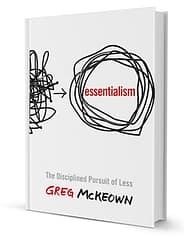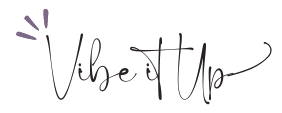Li fe doesn’t have to be as difficult and complicated as we think it is. We may face a variety of different challenges throughout our lives, but the one thing we can always control is directing our choices toward the easier path.
fe doesn’t have to be as difficult and complicated as we think it is. We may face a variety of different challenges throughout our lives, but the one thing we can always control is directing our choices toward the easier path.
The concept of essentialism was first introduced to me in a book called “Essentialism – The Disciplined Pursuit of Less” and I find it to be one of the key concepts that I’ve incorporated into much of my everyday life. It’s simply the idea of less but better and cutting out everything that I possibly can so that I can leave room for everything that matters the most and will make the biggest impact in my life.
These are some of the guidelines from essentialism that I have been incorporating into my life for some time, and I believe it can change your life for the better as well:
1. Zero-based owing
This is kind of the concept of “Sunk Cost”: if we have already invested money, time or anything else into something, then we have a tendency to not want to stop since we’ve already put in so much time and energy or funds for the project or goods. Instead, we need to look at it from a different perspective and change our mindset about it.
First of all, pretend you don’t owe this item and ask to yourself: “Would I really buy a new one if, as a matter of fact, you had to?”. If the answer is “no”, it’s an excellent indication that you should get rid of this thing.
Maybe one of the hardest things for us to do when we’ve started something is to admit that we made a mistake, especially when it comes to a project that we’ve invested a lot of time or money into it, or when we buy clothing or another product. Admitting you were wrong and learning from it is something super important that lots of people refuse to do, and if you refuse to learn from your mistakes you will continue to put resources and time into them, and this all prevents you from moving in the right direction in life.
So, just go back to those things and ask: “Would I start it all again?”, “Would I put all that time and effort on it?”, “Would I start this project?”, “Would I buy this thing NOW, or I am just doing this because I have already sunk in time and money?”.
2. Be the editor of your own life
This is a creative method of viewing your life as a movie that you can cut out certain elements from, as if you were editing it. It works as if you have 40 minutes of babbling, and you take that down to the 8 minutes that are really valuable for you. You become aware that some of the things that you let go of feel like ‘okay things’, but they don’t add anything to the overall excitement of your life.
Another example is when you use the “90% Rule”, which is a decision-making technique where you pick one criterion for deciding and decide on each option on the 0-100 scale depending on it. If it is not a 90% or above, which is really a high standard to hold yourself to, then let it go.
3. Make it sustainable
Instead of doing what lots of people do, which is becoming obsessed with a top for just a couple of weeks, going hard really quickly with a 30-day diet or a 30-day budget, for example, this is an idea of taking a break, analyze things and ask to yourself: “How can I make it sustainable, so I don’t burn out?”, “How can I do it consistently over a longer amount of time and not go too hard or get stressed about everything and do it for a short time period?”.
4. Slow down and abandon laziness
Sometimes, we mistake hyperactivity for productivity, believing that if we place more energy and time into a project, that will produce a better outcome. This is not always true, we sometimes forget to optimize our efforts to just do as much as possible.
For instance, you can think that reading 10 books might have more knowledge in them than one book, but if you just breeze through the 10 books, you might not get much out of it… On the other hand, if you just slow down and read one book, thinking about how it can apply to your life, it will fill out your life a lot more.
A lot of time we are still busy doing stuff that we don t ever stop and consider: “Do I need to be doing this at all?”, “Can I cut a lot of that stuff out of my life, so that I can have more time to actually I have control and do the things that are important to me?”.
When I identified those few things that were very important to me, I started finding systems to take care of other things, so I don’t have to do them. As a result, my productivity went way up and my stress level went way down. It is just a super helpful thing.
5. Choose to live the NOW
“The future never comes. Life is always now.” (Eckhart Tolle)
It’s very hard for many people to live in the present moment, as they are always thinking about what has happened before or what will happen in the future.
Remember that each moment can be a chance to start over. It may be one moment that changes your life when you decide to let go of the past, when you choose to forgive, when you choose to start again, when you choose to take control, you choose to take action, or you choose to change something, and that one moment where you actually do something can change everything going forward.
If we can control only the NOW, and just what is happening at this moment is the most important thing, why aren’t we more curious and focused on: “What one choice can I choose right now that will make a thousand choices in the future?”.
6. Invert
Many people will look at things and ask: “Why is it so difficult?”.
We have to alter our belief that the right way to do something is the hard way to do it. Many times, this is not always precisely the case. We need to start inverting questions like that and ask: “What would this look like if it was was easy?”, “How am I making this difficult when it’s not supposed to be?”, “What is the easiest way that I can make a few decisions right now and that will solve my problem for a long time?”.
Instead of being overwhelmed by all the tasks we don’t like doing and don’t seem capable of performing, think more often: “How can I make it easier?”.
7. Make it enjoyable
Sometimes we have to do some tasks that we don’t like, doesn’t matter if it is simple or really complicated. The idea here is to combine it with something you find enjoyable, training your brain to enjoy those challenging activities by setting up a reward with something you hate doing.
Sometimes we think of work as something that is just not enjoyable, but this is more figuring out what we could do to mix something enjoyable — like relaxing chilling doing whatever excites you — with getting work finished.








